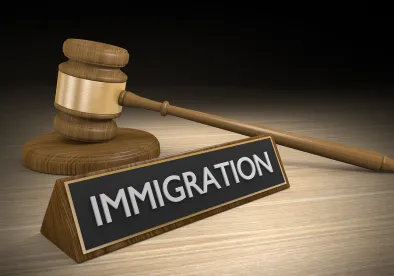Employers across the country flooded the U.S. Department of Labor’s Foreign Labor Application Gateway System at the stroke of midnight on January 2, 2020.
The reason? To enter a random selection process—a lottery, of sorts—with the hope of being randomly selected to hire foreign unskilled and skilled workers to travel to the United States for a temporary duration, to assist U.S. employers during a one-time need occurrence, seasonal, peak-load, or intermittent needs.
During the three-day filing window, over 5,500 employers submitted applications requesting nearly 100,000 temporary workers. Of the 100,000, only 33,000 positions will be selected through what the U.S. Department of Labor refers to as a “randomization” process.
What is the H-2B Nonimmigrant Visa?
The Immigration and Nationality Act (the “INA”) establishes the H-2B nonimmigrant classification for a nonagricultural temporary worker that has a residence in a foreign country that he or she has no intention of abandoning and is coming temporarily to the United States to perform temporary non-agricultural service or labor. Prior to requesting H-2B nonimmigrant workers, the U.S. employer must establish to the U.S. Department of Labor that there is no qualified U.S. worker available to fill the employer’s job opportunity and the foreign worker’s employment in the job opportunity will not adversely affect the wages or working conditions of similarly-employed U.S. workers.
In New Jersey and Pennsylvania, the H-2B nonimmigrant visa program has proven successful in assisting hundreds of employers to fill the employment gap in times of peak business performance. Thousands of H-2B nonimmigrant visa beneficiaries from across the globe travel to the United States to temporarily work in all types of jobs in a multitude of industries, including landscaping, construction, manufacturing, distribution, hospitality (resorts, hotels, campgrounds, spas, and seasonal travel destinations), school summer programs, health care, and truck driving/transport.
Each Federal Government fiscal year (October 1st – September 30th), the INA sets a cap of 66,000 on the number of temporary foreign workers who may be issued H-2B nonimmigrant visas. The 66,000 visas are distributed semi-annually, with 33,000 H-2B nonimmigrant visas issued in the first half of the Federal Government’s fiscal year (October 1st), and the remaining 33,000 H-2B nonimmigrant visas issued during the second half of the Federal Government’s fiscal year (April 1st).
Employers seeking one of the coveted 33,000 H-2B nonimmigrant visas for the second half of the Federal Government’s 2020 fiscal year were required to submit applications to the U.S. Department of Labor between 12:00 a.m. on January 2, 2020, and 11:59 p.m on January 4, 2020.
Over the three days, employers “filed 5,509 applications in the Foreign Labor Application Gateway System requesting more than 96,319 worker positions,” according to the U.S. Department of Labor. With only 33,000 H-2B nonimmigrant visas, less than a third of the requests for workers will be accepted, leaving thousands of employers with an insufficient workforce, given the labor pool shortage.
Randomization?
The U.S. Department of Labor will first randomly order for processing all completed H-2B nonimmigrant visa applications requesting the earliest permissible start date of work and filed during the initial three calendar days of the time period. For example, employers seeking employees with a need start date of April 1, 2020, and lodges an application with the U.S. Department of Labor within the first three days of the filing period will be randomly ordered for processing.
On the next business day that follows the three-day filing window, the U.S. Department of Labor will use a standard computer-generated process for randomizing values in a data set, which will then generate and assign a unique random number to each completed H-2B nonimmigrant visa application filed within the three-day filing window with the earliest start date of work. These applications will be sorted in ascending order based on the unique random number assigned to each application.
Then, based on the randomly generated order, the U.S. Department of Labor will select the number of H-2B nonimmigrant visa applications that, combined, contain enough worker positions to reach the 33,000 semiannual cap and place the positions in an H-2B nonimmigrant visa “Assignment Group,” with the initial H-2B Assignment Group always including the number of H-2B nonimmigrant visa applications to reach the 33,000 semiannual cap. Once selected and assigned, the application is forwarded to a U.S. Department of Labor analyst for detailed review and processing. If the application is finally certified by the U.S. Department of Labor, employers must then petition U.S. Citizenship & Immigration Services for the actual H-2B nonimmigrant visa foreign workers. If U.S. Citizenship & Immigration Services approves the employer’s petition, the foreign national must submit an application to and appear for an in-person interview at the U.S. Consulate, who will either issue a visa to allow the foreign national entry into the United States or deny the visa application for any number of reasons, including, among others, the foreign national’s inability to present enough evidence to establish non-immigrant intent.



 />i
/>i

